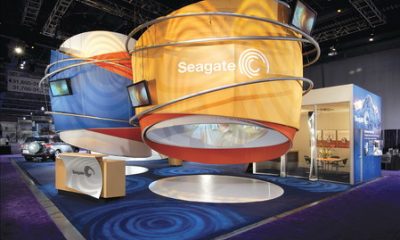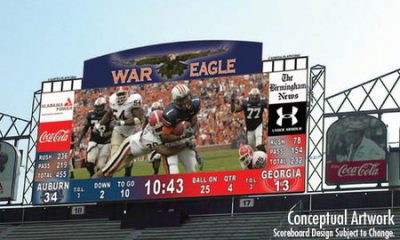Marya Morris will probably see the words “best practices” in her nightmares for years to come. Her arrogance in ignoring those little words convinced a U.S. District Court that the American Planning Assn. (APA) had breached its decade-old contract with the Signage Foundation for Communication Excellence (SFCE). She undoubtedly believed the “full editorial control” specified in the original contract allowed her to ignore contract provisions, i.e., a “best practices” manual. In a macro sense, this attitude of being above the law embodies the APA’s socialist belief the U.S. Constitution is likewise optional, as noted in ST’s May 2002 cover story.
On February 5, 2007, U.S. District Court Judge Robert Miller Jr. ruled the APA and the research report’s author, Morris, “not only did not produce the best practices manual the Signage Foundation hoped to see, it did not produce any sort of best practices manual. The agreements gave the Planning Association editorial control over the content of the best practices manual, as long as it produced a best practices manual.”
On July 25, 1996, the SFCE and the APA signed a contract in which the former would pay $125,000 to have the latter write a Planning Advisory Service (PAS) report called “Context-Sensitive Signage Design.” The APA has produced 460 PAS reports since 1949. The contract said the report would be finished in 24 months.
A nine-member steering committee comprised four people appointed by the SFCE and four by the APA, with a jointly appointed chairperson. Dr. R. James Claus wasn’t a committee member, but he provided the most compelling complaints about bias superceding objective research in the process.
Claus’ complaints even raised the eyebrows of then (1998) APA President Dr. Eric Damian Kelly, who said he’d received virtually identical complaints from the National Assn. of Home Builders (NAHB) regarding a separate PAS report. In a July 14, 1998 letter to the APA board of directors, Kelly said Claus’ complaint “closely resembles some of the concerns expressed by the NAHB about the Growing Smart project.” Later in the letter, he said other steering committee members could “confirm the factual and theoretical basis of what he [Claus] has to say.”
The day before, in a letter to APA Executive Director Frank So, Kelly wrote, “Many of his [Claus’] positions are reasonable and points well taken.” Was Kelly speaking in general terms, or chastising the APA’s research department in that same letter? “Research is not advocacy. Good researchers who disagree with a particular study or theory acknowledge the theory or study and cite the data that supports their dissenting opinion.” Kelly concluded to So, “Hearing such similar concerns, however, from two different groups on two research projects at the same time, gives me considerable pause.”
Advertisement
While APA was supposed to be writing the objective SFCE PAS report, it was writing the insidious Smart Growth Legislative Guidebook, which is extensively dissected in ST’s May 2002 issue. If the APA had concurrently produced an objective PAS report and the Guidebook, it might as well have simultaneously produced Karl Marx’s Communist Manifesto and the U.S. Constitution.
In eloquent testimony at the January 22, 2007 hearing, SFCE attorney Thomas A. Claus (Dr. Claus’ son) explained APA’s idea of “editorial control. Not what anyone else had to say mattered. Not what the steering committee had to say mattered. Not what the contract had to say mattered. Whole provisions of the contract could be ripped from the pages just simply because they didn’t think they were important on their own, regardless of how important other people, the other party to the contract, the Signage Foundation, thought that those provisions were.”
Thomas Claus specified many contractual provisions, such as signs’ economic value in the contentious Chapter 4. The sign industry view on amortization was also dismissed. Morris altered the elder Claus’ appraisal techniques to an unrecognizable and incorrect version. But Thomas Claus focused on Morris’ absolute decision to exclude a glossary despite having admitted in testimony the SFCE had provided one and acknowledging “Definitions are very important to a [sign] code.”
After the APA failed to meet the initial August 10, 1998 deadline, the SFCE agreed to an amended contract that carried a no-later-than September 18, 2000 deadline. The final draft wasn’t completed until July 20, 2001.
In his rebuttal, APA attorney James Groves argued the PAS report, as is the practice of law, is a “work of art” rather than a “science.” Morris-like, he claimed, “Nowhere in the contract is the Planning Association and the staff bound by whatever the steering committee did.” Everything would have gone smoothly, he said, “except for the intervention of Dr. Claus,” who became “the core problem to the progress.” Probably would have preferred editorial control over Kelly’s letters.
I easily loathe Marya Morris, but, upon reflection, I shouldn’t. She is simply a good solider, a quintessential public example of APA elitism. I hope APA’s unwavering arrogance compels it to appeal. The courts could revisit the fraud claim.
Advertisement

 Tip Sheet1 week ago
Tip Sheet1 week ago
 Photo Gallery3 days ago
Photo Gallery3 days ago
 Ask Signs of the Times5 days ago
Ask Signs of the Times5 days ago
 Real Deal2 weeks ago
Real Deal2 weeks ago
 Benchmarks1 week ago
Benchmarks1 week ago
 Photo Gallery10 hours ago
Photo Gallery10 hours ago
 Women in Signs2 weeks ago
Women in Signs2 weeks ago
 Paula Fargo9 hours ago
Paula Fargo9 hours ago












